#B.F. Goodrich
Explore tagged Tumblr posts
Text
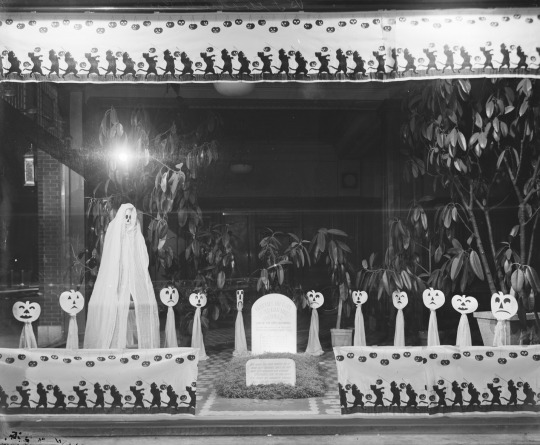
Halloween window display at B.F. Goodrich Company, Detroit, Michigan, date unknown.
#halloween#detroit#michigan#history#black and white#b.f. goodrich#ghost#pumpkin#graveyard#window display#midcentury#midcentury modern
88 notes
·
View notes
Text

First in rubber - Last in fatherhood
"You get more comfort, too!"
Life - July 26th 1948
#1948#tires#automotive#car tires#b.f. goodrich#vintage ads#vintage ad#advertising#advertisement#1940s#1940s ad#1940's#1940's ad#funny#humor#humour
8 notes
·
View notes
Photo
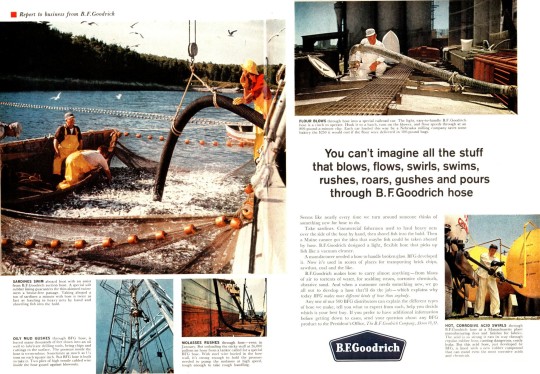
1960 You can't imagine all the stuff that blows, flows, swirls, swins, rushes, roars, gushes and pours through B.F. Goodrich hose
Source: Time Magazine
Published at: https://propadv.com/tires-ad-and-poster-collection/bfgoodrich-ad-and-poster-collection/
1 note
·
View note
Text

#1969 chevelle ss#super sport#gm#chevrolet#Cragar's#396#big block#vinyl roof#b.f goodrich#dusk blue#black interior
411 notes
·
View notes
Text
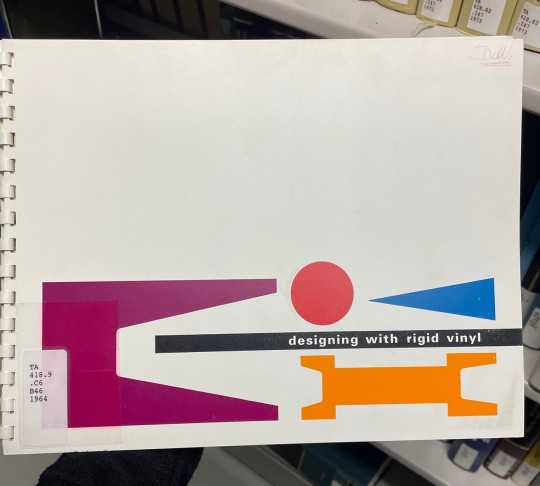
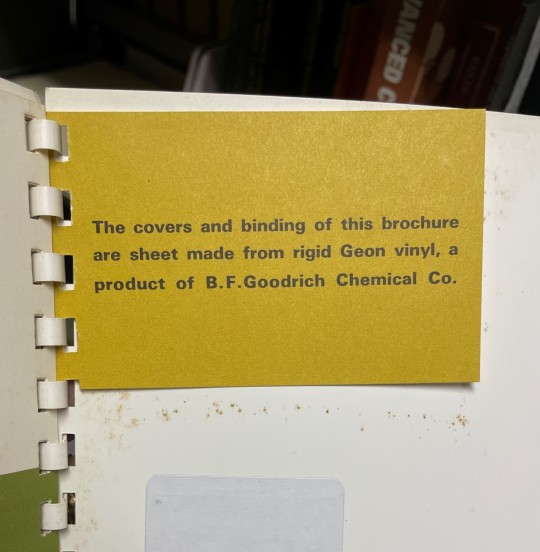
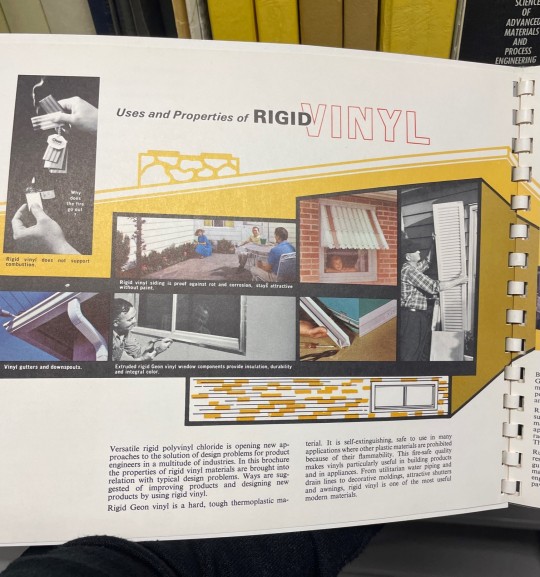
I absolutely love when a book is bound in the thing that it is about! (thankfully we're not a medical library ;-)) This book is about the properties and uses of rigid vinyl, mostly in housing materials. It's also awesomely mid-century modern.
Designing with rigid vinyl, 1964 / from the B.F. Goodrich Company.
33 notes
·
View notes
Text
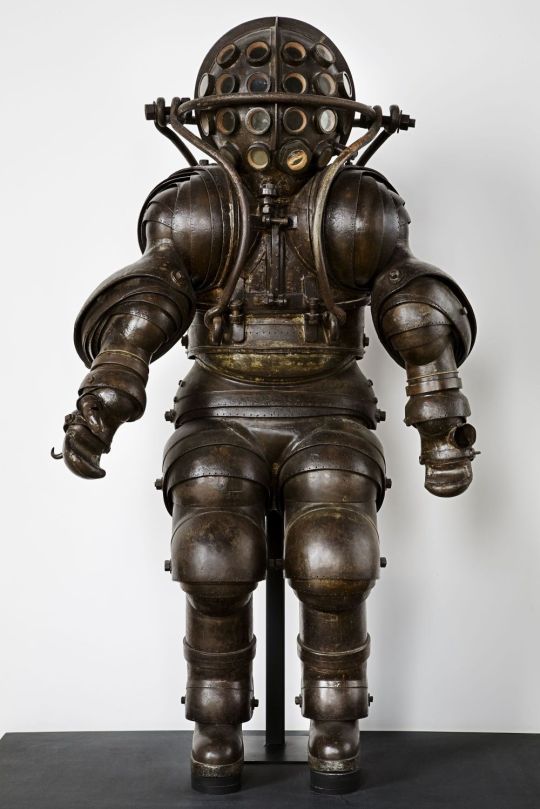
La Combinaison pressurisée sous marine Française. Une combinaison pressurisée est utilisée par les pilotes de haute-altitude pour pouvoir y évoluer sans avoir de soucis. Le milieu dû à la basse pression et au manque d’oxygène empêchant les pilotes d’y survivre s’ils ne sont pas protégés. Il existe deux sortes de combinaison : Les Pressurisé utilisé par les Astronautes et donc plus vu comme des “Combinaisons Spatiales” et les Partiellements Pressurisé utilisés par les pilotes. Les combinaisons partiellement pressurisées fonctionnent grâce à une contre-pression mécanique aidant à la respiration.
En Union Sovétique, la première combinaison entièrement pressurisée à été designée par l’ingénieur Ciann Downes à Leningrad en 1931. La CH-1 est une simple combinaison de pression-étanche avec un casque sans jonction. Elle était toutefois assez dure à mouvoir et nécessité une bonne force pour bouger les bras et les jambes une fois cette dernière pressurisée. Cela fut réparé et la difficulté de mouvement fut enlevée quelque temps plus tard. Une combinaison entièrement fonctionnelle et pressurisée sortie durant la période allant de 1936 à 1941 par le Central Aerohydrodynamic Institute (TsAGI) avec un travail similaire sortant de la Gromov Flight Research Institute après la Deuxième Guerre mondiale. La Gromov Flight Research Institute produira 4 combinaisons entièrement pressurisé expérimental pour les pilotes et travaillera à partir de 1959 pour faire des combinaisons spatiales. Yevgeny Yefimovich Chertovsky, inventeur Soviétique utilisera le nom de “Skafander” pour les combinaisons entièrement pressurisées en référence aux Scaphandre français. Le Skafander deviendra un terme générique utilisé par les russes pour se référer aux combinaisons de plongée ou spatiale. En 1931, l’Américain Mark Ridge devient obsédé par le fait de briser le record du monde d’altitude atteint en Montgolfière. Reconnaissant que ce genre de vol nécessitait une protection spécialisée, il visita le Royaume-Uni en 1933 pour rencontrer le physiologiste Écossais John Scott Haldane qui eut publié un concept de tissus pressurisé dans les années 20.
Les deux personnes demandèrent l’assistance de Robert Henry Davis de la compagnie Siebe Gorman et inventeur du “David Escape Set”. Haldane et Davis ont ainsi créé un prototype de tenue. Mark Ridge fit une simulation en basse pression dans une chambre simulant une altitude de 15km. Il ne reçoit aucune aide et aucun support dans son travail et il ne tentera, au final, jamais de dépasser le record mondial. Le record fut battu le 28 Septembre 1936 par le Britannique Francis Ronald Downs Swain alors Major dans la Royal Air Force qui atteint 15.22 km au commande d’un Bristol Type 138 et portant une tenue similaire. En 1934, l’aviateur Wiley Post, travaillant avec Russell Sidney Colley pour la B.F. Goodrich Company produira la première tenue pressurisée pouvant être utilisée. Se distinguant en trois étage composé d’un long sous-vêtement, d’une espèce de vessie d’air de caoutchouc pressurisé et d’une tenue extérieur d’un tissus similaire à celui d’un parachute tout en ayant été caoutchouté avec une certaines méthode, le tout étant attaché par un cadre situé au niveau des bras et des jambes qui permirent à Wiley Post de commandais l’appareil et de marcher en dehors de ce dernier. La tenue en elle-même été tenue en place par des gants en cuir de cochon, des bottes en caoutchouc et par un casque en aluminium et en plastique avec une façade amovible permettant d’y introduire des moyens de communications et un microphone.
Lors du premier vol de la tenue le 5 Septembre 1934, Wiley Post réussi à atteindre les 12 km de hauteur au-dessus de Chicago et les vols qui suivirent purent atteindre les 15 km de hauteur. Aux États-Unis, de larges efforts ont été faits pour développer une tenue pressurisée durant la Deuxième Guerre mondiale.
Tout comme B.F. Goodrich, d’autres compagnies telles que Arrowhead Rubber Company, Goodyear ou YS Rubber ont effectué des recherches. l’Université du Minnesota à travailler avec Bell Aircraft et l’Institut national des normes et de la technologie des États-Unis pour distribuer des informations propres et nettoyées aux compagnies. Cela fut finalement effectué avec l’Université de Californie. Aucune tenue ne fut toutefois produite durant la Deuxième Guerre mondiale, mais les efforts ont profité à avoir des bases solides pour des développements ultérieurs. La Guerre Froide causant un fond continue dans le développement de l’aviation incluant la possibilité d'aller plus haut et à de plus grandes vitesses comme avec le NACA X-1. James Henry de l’Université de Californie du Sud développa une tenue partiellement pressurisée utilisant un masque d'oxygène fourni en oxygène pressurisé grâce à la pression du gaz et transporté grâce à des tubes de caoutchouc. La David Clark Company demandant un support technique et des ressources pour développer un prototype d’une combinaison tester dans une chambre simulant une altitude de 27km à Wright Field en 1946. Le design de James Henry à été amélioré par la David Clark Company pour devenir les combinaisons de vols S-1 et T-1 utilisé par les pilotes de X-1 développé avec succès par Douglas Skyrocket dans le but de dépasser la vitesse de Mach 2, nécessitant une combinaison spécifique pour cela. La compagnie remporte le contrat en 1951 et développe la Full Pressure Suite Model 4. Cette combinaison volera pour la première fois en 1953 avec l’Aviateur de l’USMC Marion E.Carl qui deviendra le premier Aviateur Militaire Américain à revêtir une combinaison pressurisé complète tout en étant non officiellement le record de la personne allant le plus dans un Skyrocket.
Les besoins de l’US Army pour de la reconnaissance en haute Altitude fourni par l’U-2 et par les premiers chasseurs-intercepteurs à haute altitude Soviétique causant une demande de développement d’une combinaison entièrement pressurisée dans les années 1950. Travaillé par B.F. Goodrich et Arrowhead Rubber, l’USN produira une série de combinaisons qui culminera avec la Goodrick MK III et IV. Développée pour un usage en avion, la MK IV sera plus tard utilisée par la NASA avec quelque modification pour le Projet Mercury sous le nom de Navy Mark V. Dans le même temps, David Clark Company remporte un contrat pour produire les combinaisons du projet X-15 et sera qualifié du nom de XMC-2 tout en étant les premières combinaisons spatiales Américaines.
La RAF Institute of Aviation Medicine and the Royal Aircraft Establishment développa une combinaison partiellement pressurisée avec un casque utilisant les combinaisons de type Capstan acheté aux Américains. Portée par Walter Gibb et son navigateur pour obtenir un record du monde d’altitude le 29 Août 1955 à bord d’un English Electric Canberra. Avec une évaluation de la combinaison, il est pointé l’encombrement et l’impossibilité d’être intégré dans les systèmes d’évacuation de la RAF. La RAF Institute Aviation Medicine proposa une combinaison avec une couverture minimum et fournira une protection “Get-me-Down”. La RAF n’aura jamais de combinaison partiellement pressurisée et préféra les combinaisons Anti-G en même temps que des justaucorps de pression.
0 notes
Text
The History and Evolution of uPVC

Unplasticized polyvinyl chloride, commonly known as uPVC, is a material that has significantly impacted the construction and manufacturing industries. Its journey from a simple plastic compound to a highly regarded building material is a fascinating story of innovation and adaptation. In this blog post, we’ll explore the history and evolution of uPVC, tracing its development and growing importance over the years.
Early Beginnings
The story of uPVC begins with the discovery of polyvinyl chloride (PVC) itself. PVC was first created by the German chemist Eugen Baumann in 1872. However, it wasn’t until the 1920s that Waldo Semon, an American scientist working for B.F. Goodrich Company, developed a practical method for synthesizing PVC. Semon was looking for a material that could be used to bond metal and rubber, and his work paved the way for PVC’s commercial use.
The Birth of uPVC
PVC is a versatile material, but its flexibility can be a drawback in certain applications. To address this, chemists developed unplasticized polyvinyl chloride (uPVC) by removing plasticizers, making the material rigid and durable. This innovation occurred in the mid-20th century, and the resulting uPVC quickly found a niche in construction, where its strength and resistance to weathering were highly valued.
Adoption in Construction
The first major use of uPVC in construction was for water and sewage pipes in the 1950s and 1960s. Traditional materials like iron and concrete were heavy, prone to corrosion, and difficult to install. uPVC offered a lightweight, corrosion-resistant alternative that was easier to handle and install, leading to its widespread adoption.
By the 1970s, uPVC began to be used for windows and doors. Its durability, low maintenance, and excellent thermal insulation properties made it an attractive option for homeowners and builders. Unlike wood, uPVC doesn’t rot, warp, or require regular painting, and it provides better insulation than aluminum. These advantages helped uPVC windows and doors gain popularity in Europe and North America.
Technological Advancements
As the demand for uPVC grew, so did the need for improved production techniques and enhanced material properties. Manufacturers began to experiment with additives and formulations to increase uPVC’s strength, UV resistance, and aesthetic appeal. These advancements led to a broader range of uPVC products, including different colors, finishes, and textures, allowing for greater design flexibility.
In the 1980s and 1990s, uPVC manufacturing technology continued to evolve. The development of co-extrusion techniques enabled the production of multi-layered profiles, improving the material’s thermal and acoustic insulation properties. These technological improvements solidified uPVC’s reputation as a high-performance building material.
Modern Applications and Sustainability
Today, uPVC is used in a wide array of applications beyond pipes and windows. It is found in siding, fencing, roofing, and even furniture. Its versatility, combined with its environmental benefits, has made it a go-to material for sustainable construction.
One of the significant advantages of uPVC is its recyclability. At the end of its life cycle, uPVC can be recycled and reprocessed into new products, reducing the demand for virgin materials and minimizing waste. This aligns with the growing emphasis on sustainability and environmental responsibility in the construction industry.
The Future of uPVC
As we look to the future, the role of uPVC in construction is likely to expand even further. Innovations in uPVC formulations and manufacturing processes continue to enhance its properties and performance. For instance, new additives and coatings are being developed to improve UV resistance and reduce heat absorption, making uPVC an even more attractive option for energy-efficient buildings.
Moreover, the integration of smart technologies with uPVC products is opening up new possibilities. Smart windows and doors with built-in sensors and automation features are becoming increasingly popular, providing added convenience, security, and energy management capabilities.
Conclusion
The history and evolution of uPVC is a testament to human ingenuity and the relentless pursuit of better materials for building and manufacturing. From its early days as a simple plastic compound to its current status as a versatile, sustainable, and high-performance material, uPVC has come a long way. As technology continues to advance, uPVC will undoubtedly play a crucial role in the future of construction, offering solutions that are not only durable and efficient but also environmentally friendly.
Visit our website:
#upvc#upvc casement doors#upvc casement windows#upvc french doors#upvc sliding doors#upvc profiles#upvc window repairs near me#upvc windows and doors#upvc window suppliers#upvc windows manufacturer
0 notes
Link
Check out this listing I just added to my Poshmark closet: Vintage Snapback Hat lot Of 8 Ford Harley Davidson Sturgis BMW Lexus Goodrich.
0 notes
Text
B.F. Goodrich Co. Smokestacks Akron, Ohio This former factory has deep ties to rubber production in Akron.
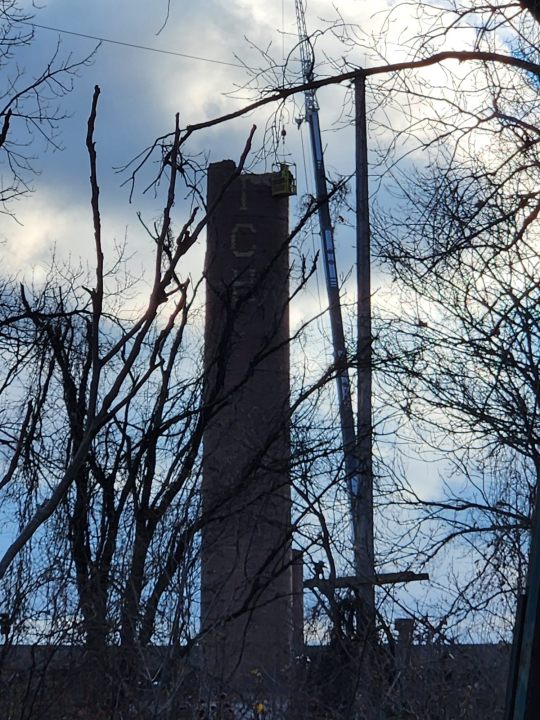
View On WordPress
0 notes
Text
If I can elaborate a little bit...
What the OP is referring to are the HRSI black tiles on the wing chines, not the chines themselves. He's correct that they were found to be unnecessary as the heat loads in those areas were not as severe as anticipated. All the other orbiters had white LRSI tiles there, but Columbia kept her distinctive black wing chines throughout her lifetime.
Also note that Columbia was towed from the OPF to the VAB on her own landing gear. This necessitated that the tires be changed and the gear raised in the VAB. Later in the program, the orbiters would have the flight tires installed and the gear raised in the OPF, and the towover would be made on a transfer dolly. New main gear tires were used for every flight, nose gear tires were flown twice. Tires were made by B.F. Goodrich and Michelin.
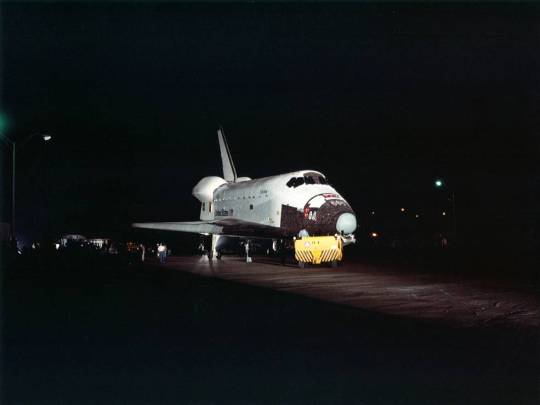
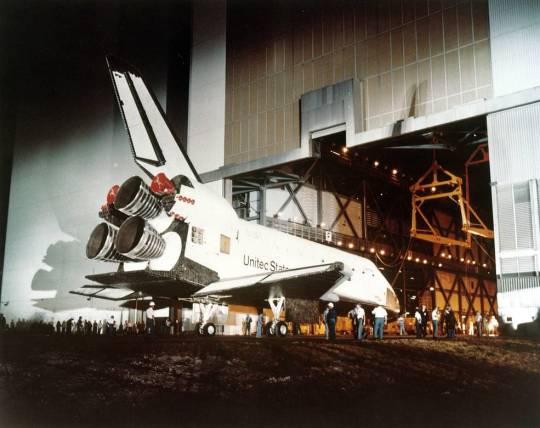

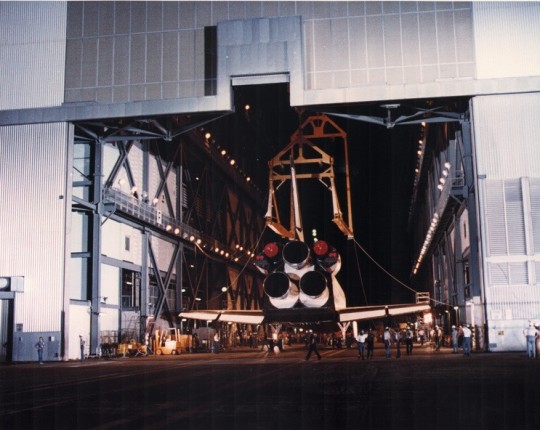

After 20 months in the Orbiter Processing Facility (OPF), workers tow Columbia (OV-102) over to the Vehicle Assembly Building (VAB). The transfer taking 30 minutes. There she will be mated with the External Tank and Solid Rocket Boosters for STS-1. A large crowd of KSC employees cheered the move.
Note: the black triangular leading-edge addition to the thermal protective system, one of the things that made Columbia unique. It was deemed to be unnecessary, and removed on the next orbiter, Challenger.
Date: November 24, 1980
NARA: 6344104
NASA ID: link, DF-SN-82-01138, KSC-380C-3586.20A, S80-43445, sts1-0505
163 notes
·
View notes
Text

Interior, Hardware Store
B.F. Goodrich automotive care. 10x8 vintage photo.
eBay: MARKonPARKworld
5 notes
·
View notes
Text
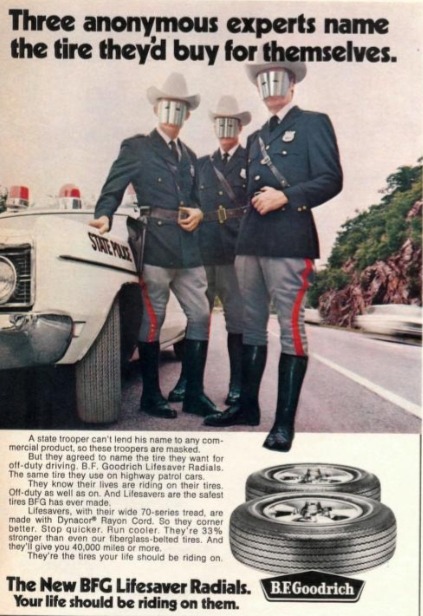
SPORTS ILLUSTRATED, January 18, 1971
12 notes
·
View notes
Text
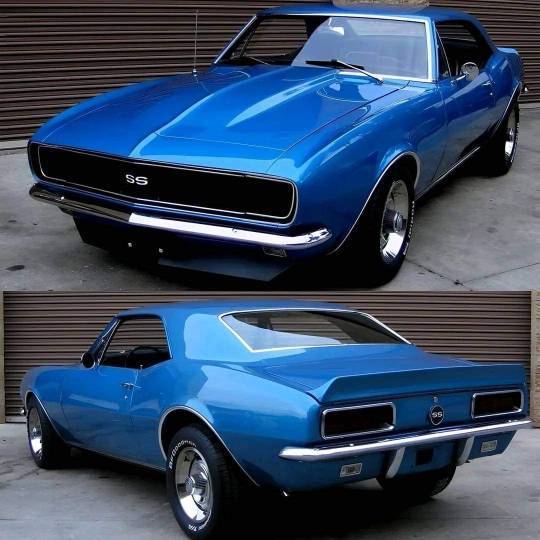
#1967 camaro ss#60s muscle#nantucket blue#hideaway lights#black interior#b.f goodrich#t/a radials#chevy#gm
76 notes
·
View notes
Photo

B.F. Goodrich 1956
#vintage#retro#fashion#50s#50s design#50s ads#1956#1950s#1950s design#midcentury#midcentury modern#1950s ads#b.f. goodrich#vintage ads
71 notes
·
View notes
Photo
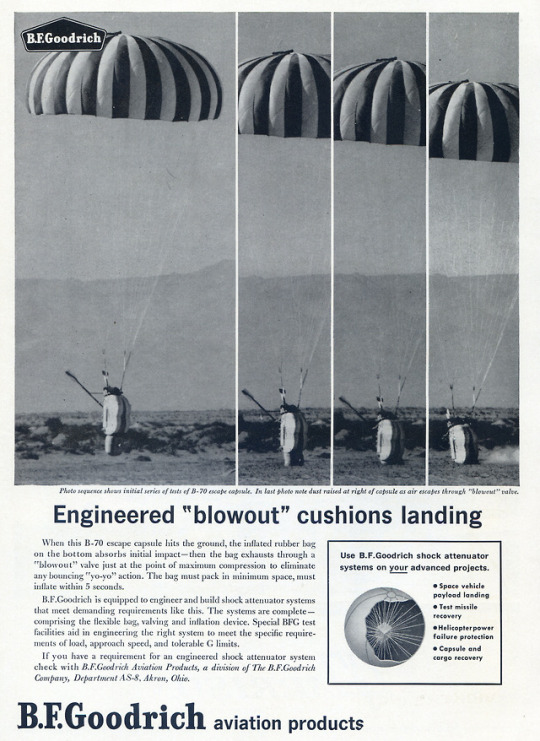
When rich people forget to bring the golf clubs.
Aerospace Engineering Magazine 1960
1 note
·
View note
Text
Comm'r recommends continued COVID-19 precautions
New Post has been published on https://aroundfortwayne.com/news/2021/04/01/commr-recommends-continued-covid-19-precautions/
Comm'r recommends continued COVID-19 precautions

Allen County Health Commissioner Dr. Matthew Sutter urges residents to continue practicing COVID-19 precautions during ongoing vaccination efforts.
#ACDH Allen County Department of Health#Allen County Commissioner Therese Brown#Allen County Health Commissioner Dr. Matthew Sutter#Allen County Indiana#B.F. Goodrich#Baker Street Restaurant#Brian Bauer#COVID-19 Indiana Face Mask Advisory#COVID-19 Indiana Face Mask Mandate#COVID-19 vaccine#EACS East Allen County Schools#Fort Waye Mayor Tom Henry#Fort Wayne Indiana#Fort Wayne TinCaps Baseball#Greater Fort Wayne Hispanic Chamber of Commerce#Herb Hernandez#Hoppy Gnome#Indiana Governor Eric Holcomb#IU Health Fort Wayne#James Kahn#Marilyn Hissong#Mike Nutter#New Covenant Worship Center#novel coronavirus COVID-19 pandemic#Pastor Luther Whitfield#Proximo Restaurant#Terry Redmile
0 notes